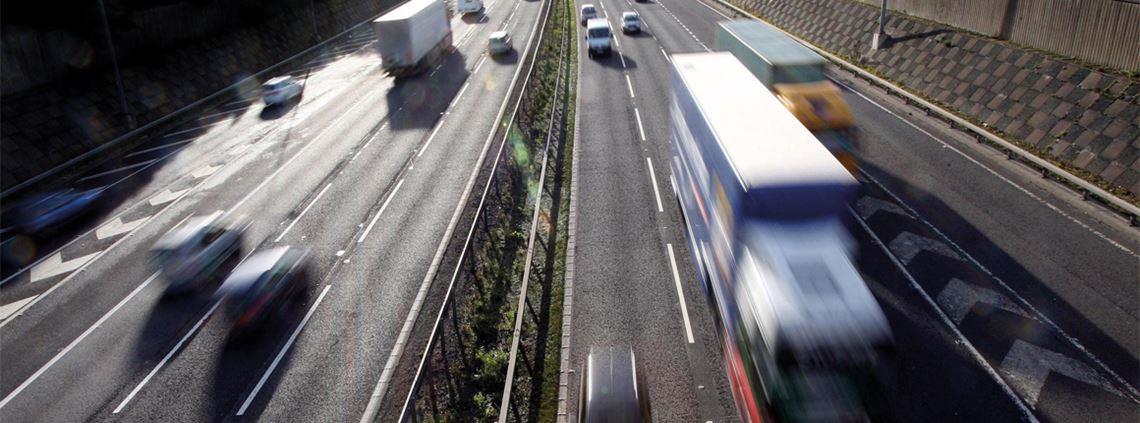How to get from John O’Groats to Land’s End on one tank of fuel
 Back
BackOne truck powered by gas has gone the distance. Going green for fleet owners doesn’t have to mean electric
by Jacki Buist of Supply Management
It would have been hard for anyone with a passing interest in cars to miss the progress of electric vehicles (EV) this summer. Volvo Cars started it by declaring it will phase out the internal combustion engine (ICE). The UK and French governments both announced they will ban diesel and petrol car sales from 2040, and Dutch bank ING predicted that all cars sold in Europe would be electric by 2035 anyway, thanks to government support and falling costs.
These plans and predictions are all about cars, so where does that leave fleet managers, who usually run a mix of cars, vans and freight vehicles? Where should the electric element come in and how can they maintain their environmental credentials across the whole fleet?
Consensus is that by now, fleet managers should be considering electric and hybrid cars and vans. And, according to a recent Shell/FleetWorld survey, one in five fleet managers already plan to add more EVs next year.
If you consider that it was 20 years ago that Toyota’s hybrid electric Prius was launched, progress has been slow. But we are in the early stages of a great transition that will change vehicle fuels, vehicle use, and business and fleet travel management, says Caroline Sandall, deputy chair of the Association of Car Fleet Operators and director of ESE UK Consulting. “And we will never see change as slow as it is today,” she adds.
Technology by size
The Prius-style hybrid car – with both an ICE engine and an electric motor that charges while driving – is still popular, according to Paul Gambrell, transport consultancy manager of the Energy Saving Trust. He expects them to achieve better mileage some time soon – and as good as a diesel car one day.
Plug-in hybrids – with bigger electric batteries that can be charged from an electric supply point – are particularly good in an urban environment. Gambrell says: “The Mitsubishi Outlander, BMW 330 and the Mercedes C-Class – they all have about 25 miles running on pure electric. And the beauty is that you can choose when to use the electric power.” Users can switch to electric as they enter a low- or ultra-low emission zone in the city, he says.
In the delivery arena, fully electric plug-in vans are popular – the Royal Mail has just ordered 100 electric Peugeot Partner vans. Small vans like the Partner, the Renault Kangoo and Citroën Berlingo make sense for urban deliveries, but there is an issue with charging, says Gambrell. “Many go home with the driver at night, and that seems to be the limiting factor.” If electric vehicles become part of your fleet, make sure there are workplace charging facilities, he says – there is a government grant available for businesses to do this.
Ryder, commercial vehicle rental and leasing provider, offers a larger electric van for its customers to try. The new Iveco Daily Electric is available in three battery sizes, and three payloads. “More batteries means a lighter payload, but enables longer range deliveries, says Nigel Carr, head of engineering at Ryder. “A 3.5-tonne high-roof van with three batteries would offer a reduced 678kg of payload, but a driving range of up to 125 miles,” he says. The added weight issue of batteries will be alleviated to some extent by the UK government’s plan to raise the weight of light commercial vehicles that can be driven on a standard driving licence – from 3.5 to 4.25 tonnes.
No hybrid-electric vans exist, says Gambrell, but adds that Ford is testing one later this year, which could be on the market in a few years. Practically all manufacturers will have all of the electric and hybrid power train options from about 2018, he says – it will be the norm.
By the time you get to the 40-tonne gross vehicles, the rival to ICE is gas, and while the fuel structure is not as developed as in the US and Europe, there is a growing interest in them.
“One was driven from John O’Groats to Land’s End without refuelling,” says Carr, who runs three demonstrator Iveco Stralis LNGs (liquid natural gas) on the Ryder fleet. “I can’t get them back. The drivers love them, they have been very reliable, good on fuel, and good on CO2.”
The diesel dilemma
Be careful not to completely demonise diesel, Sandall warns. It may be increasingly unpopular for private use, but it still has a commercial use. “Diesel is the main fuel for large HGVs, with gas coming a close second,” agrees Carr. Use it only when it is the best option, and buy new. Since the 2016 Euro 6 emissions requirements, particulates and nitrogen oxide emissions have reduced, and engines continue to improve. Nothing quite compares with diesel yet for long-distance high-mileage driving, even in a car, admits Gambrell. “Unless it is a Tesla, battery vehicles still haven’t quite got the range, and it is not economically feasible for a business. “I know of one or two companies that have bought a Tesla,” he adds. “But we haven’t seen the business rep being given one – yet.”
Plan now
Green vehicles may still be in their infancy, but you can prepare for changes to fleet. “Think around the wider business mobility issue, and understand the profile of travel,” says Sandall. “Choices are going to be highly complex and factors such as air quality in and around cities will put limitations on the sort of vehicles you use.
“Get to grips with understanding your costs and expenses and put yourself in the best possible position – the future will be a mixed bag,” she says.
“Too many companies think the answer is to leap in the car and do a journey,” adds Gambrell. “It may not be the most effective way to do it – in business or cost. If you go on the train you can do a bit of work. In a major city it sometimes makes much more sense to use a bus or tube.
“Think outside the box,” he advises.
Want to hear more? Caroline Sandall will be speaking at Fleet Management LIVE on October 3-4 at the NEC in Birmingham. For details, view the online agenda here.
Article brought to you by Supply Management for Fleet Management Live.

